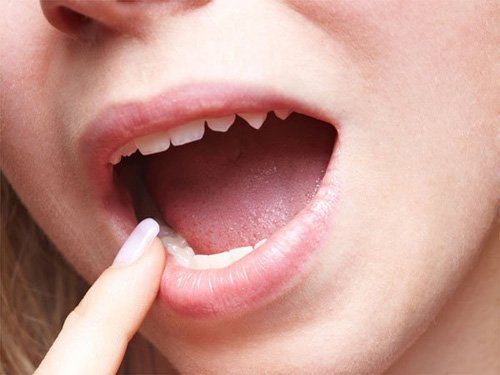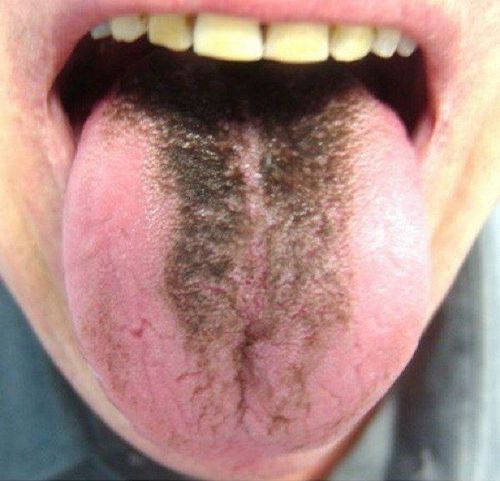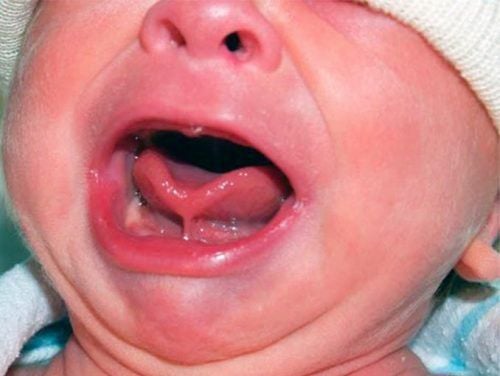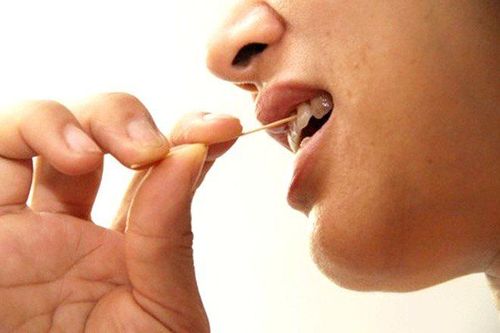This is an automatically translated article.
The human tongue is made up of a group of mobile muscles that are attached to the floor of the mouth. The surface of the tongue is covered with small spots called papillomas. Most of our taste buds are in these papillae. Normally, a pink and moist tongue with a thin, slightly white, shiny coating on the surface is considered a healthy tongue. Here are some of the most common problems with the human tongue.Often referred to as the “strongest muscles in the body,” the tongue is made up of a group of muscles that allow us to taste, swallow, and talk. A healthy tongue is pink and covered with small nodules called knobs.
Because they always have to use the tongue, they can be frustrating and uncomfortable if you experience tongue problems including discoloration, swollen tongue or tongue pain. There are many causes of tongue problems but fortunately, most tongue problems are not too serious and can be resolved quickly.
However, in some cases, tongue problems especially discoloration can be a warning sign of more serious health problems like vitamin deficiency, HIV-AIDS or tongue cancer. Therefore, it is important to seek medical attention for diagnosis if you experience any of the following tongue related problems.

Lưỡi được cho là “cơ bắp mạnh nhất trong cơ thể”
1. White tongue
There are many health problems that cause the coating on the surface to appear white spots or even turn white. Reasons for a white tongue include:
Leukemia: Leukemia causes cells in the mouth to grow uncontrollably, thus forming white patches inside the mouth, including the tongue. Although diphtheria itself is not dangerous, it can lead to cancer. That's why it's important to visit a dental clinic right away to determine the cause of white patches on the tongue. Leukemia can develop when the tongue is irritated and is more common in people who smoke or smoke. Oral thrush: Oral thrush also known as candida is a yeast infection that develops inside the mouth. This condition causes white, cheese-like patches on the surface of the tongue. Another name for oral thrush is thrush, which is most common in infants and the elderly, especially those who often wear dentures or those with weakened immune systems. In addition, people with diabetes or those who use steroids to treat asthma or other respiratory conditions can also develop thrush. Thrush also often occurs after the patient is treated with antibiotics, which destroy the beneficial bacteria in the oral cavity. Regularly eating plain yogurt containing certain types of beneficial bacteria can help improve oral thrush. Besides, in some cases the fungus grows too strongly, the patient may need to use medicine to treat.

Lưỡi trắng có thể là dấu hiệu của bệnh bạch cầu
Oral lichen planus: A network of white raised lines on the tongue with a lace-like appearance may be a sign of oral lichen planus. Doctors have yet to find out the exact cause of this disease, but usually, it does not pose a health risk. Some recommendations of dental experts to limit the risk of oral lichen planus are: Practice proper oral hygiene, don't smoke and limit eating foods that cause allergies or irritation in the mouth. ....
2. Red or strawberry-colored tongue
There are many factors that can cause a normally pink tongue to turn red. In some cases, the tongue even has a strawberry-like color and surface with enlarged red taste buds scattered across the surface. Causes of this condition include:
Vitamin deficiency: A deficiency of folic acid and vitamin B12 can cause the tongue to turn pink to red. Geographic tongue: This condition is also known as benign migratory glossitis named for the map-like pattern of red spots that develop on the surface of the tongue. Sometimes these spots have a white border around them, and their position on the tongue can change over time. While it's not usually a health risk, experts recommend getting checked out if the condition persists for more than two weeks. If the result is geographic tongue, the patient may not need treatment. In the case of pain and discomfort in the tongue, you may be prescribed some medications used to reduce discomfort.

Thiếu vitamin B12 có thể dẫn đến tình trạng lưỡi đỏ
Scarlet fever: Scarlet fever is a disease caused by the bacteria Streptococcus pyogenes. A bright red tongue is a typical symptom of scarlet fever. Scarlet fever usually occurs in children between the ages of 2-8, so when a child has a fever, parents or caregivers should immediately take them to the nearest medical facility to be treated to avoid dangerous complications such as: Ear infections, abscesses in the back of the throat, pneumonia, meningitis,... Kawasaki disease: Kawasaki disease usually occurs in children under 5 years of age. The disease affects the blood vessels in the body and causes the tongue to turn red. In severe cases, children often have a very high fever, and may have redness and swelling in both their legs and arms.
3. Black hairy tongue disease
Although there are some problems related to appearance as well as aesthetics, but black hairy tongue usually does not leave serious consequences for health. Small bumps that appear on the surface of the tongue called nipples will develop over the course of a person's life. In some people these nipples grow and become larger than usual, putting them at risk of harboring bacteria. As these bacteria grow, the papillae turn black and become excessively long like a hair.
Black hairy tongue is uncommon and is most likely to occur in people who do not practice good oral hygiene. In addition, people who are taking antibiotics or chemotherapy treatment and people with diabetes have a higher risk of black hairy tongue.

Vệ sinh răng miệng không tốt có thể khiến bạn bị lưỡi lông đen
4. Swollen tongue pain
There are many possible causes of tongue pain or swelling, including:
Injuries: Surely everyone has bitten on the tongue at least once in their life. Not only do we feel a sharp pain, biting on the tongue can also leave swelling until the injury heals. In addition, the habit of grinding teeth can also irritate the sides of the tongue, making it painful Smoking: Smokers can irritate their tongue and cause tongue pain Mouth ulcers: Many people may develop ulcers. mouth on tongue. The cause of mouth sores is not known, but doctors have found that ulcers are more likely to appear in people who experience prolonged stress. Burning mouth syndrome: Burning mouth syndrome often occurs in postmenopausal women, causing a painful burning tongue that is very uncomfortable. Certain health problems such as diabetes or anemia can cause tongue pain. Oral cancer: Although most cases of tongue swelling and pain are nothing to worry about, it is recommended to see a doctor if a lump develops on the tongue and does not go away within 2 weeks. Many cases of oral cancer are not damaged in the early stages, so it is best to see a doctor if abnormal conditions are detected on the tongue.

Hút thuốc lá là nguyên nhân gây ra nhiều bệnh lý về lưỡi
Normally, a healthy human tongue is pink, moist, and covered with a light white film on the surface. There are several possible causes of tongue discoloration and most of them do not cause negative health effects.
However, experts warn people not to be subjective because problems with the tongue can be a warning sign for abnormalities or serious diseases in the body including cancer.
Therefore you should visit the dental clinic in case you notice the appearance of any unusual problems related to the tongue.
Please dial HOTLINE for more information or register for an appointment HERE. Download MyVinmec app to make appointments faster and to manage your bookings easily.
Articles refer to the source: webmd.com













